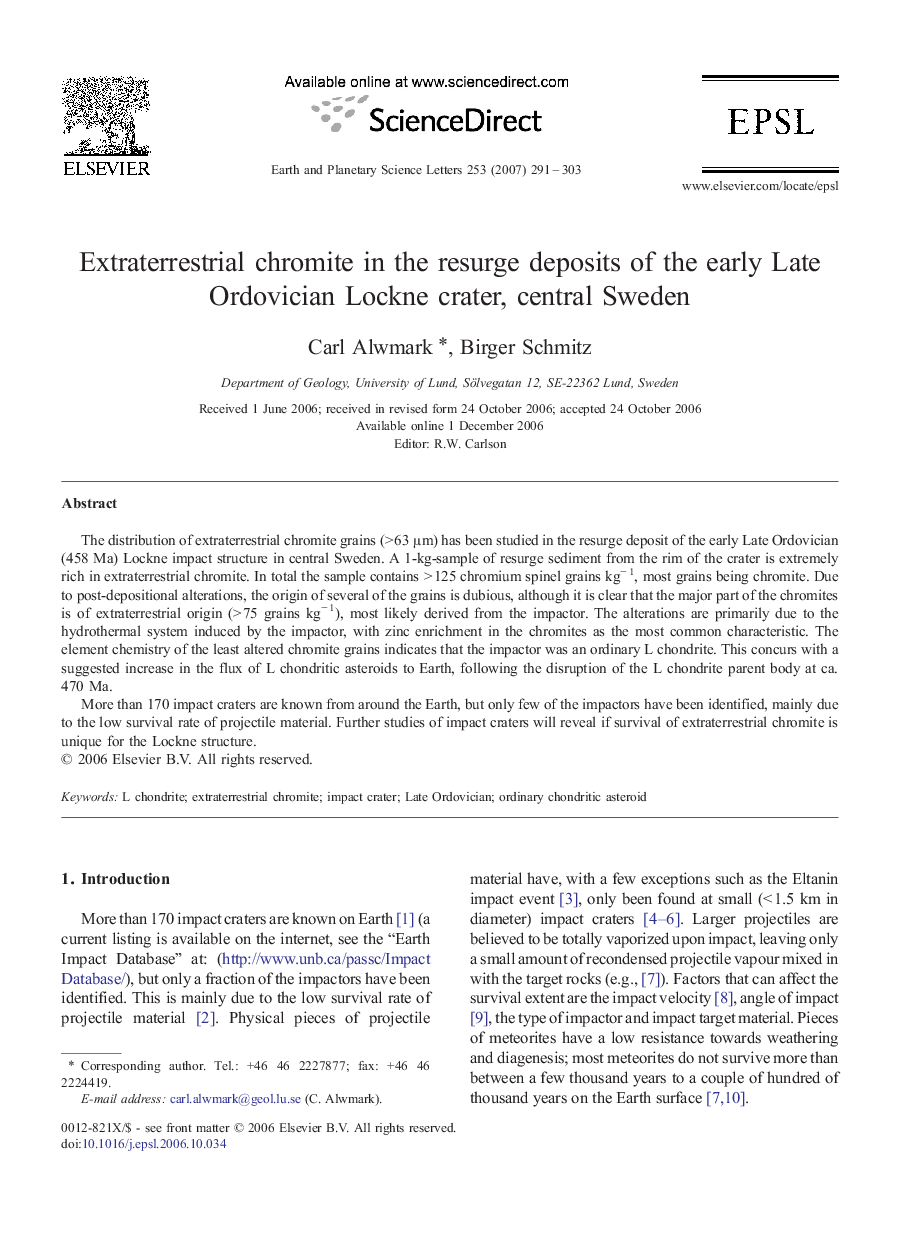| Article ID | Journal | Published Year | Pages | File Type |
|---|---|---|---|---|
| 4680635 | Earth and Planetary Science Letters | 2007 | 13 Pages |
The distribution of extraterrestrial chromite grains (> 63 μm) has been studied in the resurge deposit of the early Late Ordovician (458 Ma) Lockne impact structure in central Sweden. A 1-kg-sample of resurge sediment from the rim of the crater is extremely rich in extraterrestrial chromite. In total the sample contains > 125 chromium spinel grains kg− 1, most grains being chromite. Due to post-depositional alterations, the origin of several of the grains is dubious, although it is clear that the major part of the chromites is of extraterrestrial origin (> 75 grains kg− 1), most likely derived from the impactor. The alterations are primarily due to the hydrothermal system induced by the impactor, with zinc enrichment in the chromites as the most common characteristic. The element chemistry of the least altered chromite grains indicates that the impactor was an ordinary L chondrite. This concurs with a suggested increase in the flux of L chondritic asteroids to Earth, following the disruption of the L chondrite parent body at ca. 470 Ma.More than 170 impact craters are known from around the Earth, but only few of the impactors have been identified, mainly due to the low survival rate of projectile material. Further studies of impact craters will reveal if survival of extraterrestrial chromite is unique for the Lockne structure.
